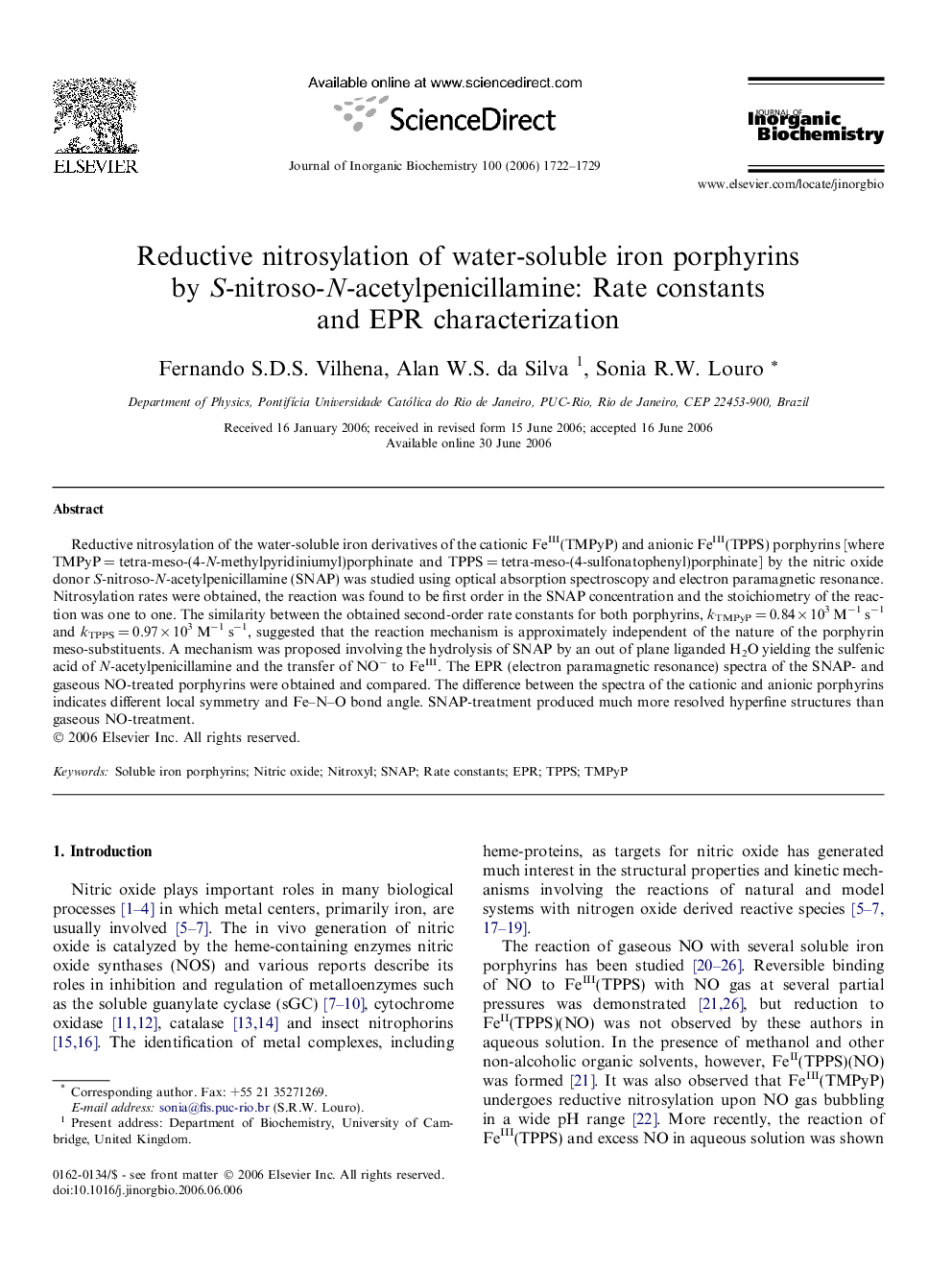| Article ID | Journal | Published Year | Pages | File Type |
|---|---|---|---|---|
| 10574203 | Journal of Inorganic Biochemistry | 2006 | 8 Pages |
Abstract
Reductive nitrosylation of the water-soluble iron derivatives of the cationic FeIII(TMPyP) and anionic FeIII(TPPS) porphyrins [where TMPyPÂ =Â tetra-meso-(4-N-methylpyridiniumyl)porphinate and TPPSÂ =Â tetra-meso-(4-sulfonatophenyl)porphinate] by the nitric oxide donor S-nitroso-N-acetylpenicillamine (SNAP) was studied using optical absorption spectroscopy and electron paramagnetic resonance. Nitrosylation rates were obtained, the reaction was found to be first order in the SNAP concentration and the stoichiometry of the reaction was one to one. The similarity between the obtained second-order rate constants for both porphyrins, kTMPyPÂ =Â 0.84Â ÃÂ 103Â Mâ1Â sâ1 and kTPPSÂ =Â 0.97Â ÃÂ 103Â Mâ1Â sâ1, suggested that the reaction mechanism is approximately independent of the nature of the porphyrin meso-substituents. A mechanism was proposed involving the hydrolysis of SNAP by an out of plane liganded H2O yielding the sulfenic acid of N-acetylpenicillamine and the transfer of NOâ to FeIII. The EPR (electron paramagnetic resonance) spectra of the SNAP- and gaseous NO-treated porphyrins were obtained and compared. The difference between the spectra of the cationic and anionic porphyrins indicates different local symmetry and Fe-N-O bond angle. SNAP-treatment produced much more resolved hyperfine structures than gaseous NO-treatment.
Related Topics
Physical Sciences and Engineering
Chemistry
Inorganic Chemistry
Authors
Fernando S.D.S. Vilhena, Alan W.S. da Silva, Sonia R.W. Louro,
